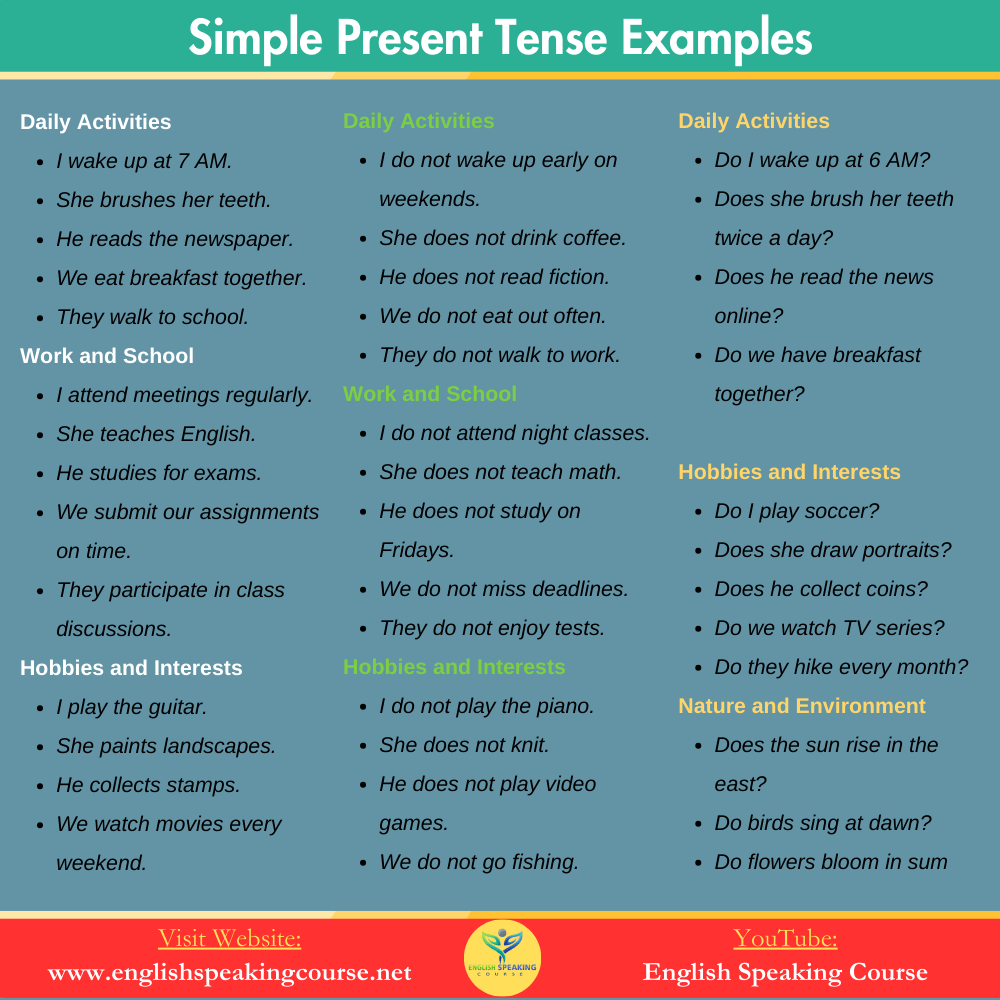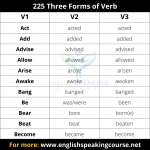Simple Present Tense
Introduction to Simple Present Tense
The Simple Present Tense is a fundamental aspect of the English language. It is one of the first tenses that language learners encounter and is crucial for effective communication. But what exactly is the simple present tense? Why is it so important in our daily conversations? Let’s dive in and explore the nuances of this essential tense.
What is the Simple Present Tense?
The Simple Present Tense describes actions that are habitual, general truths, or situations that are happening right now in a broad sense. Unlike other tenses that focus on the past or future, the simple present keeps us grounded in the here and now.
Importance of the Simple Present Tense
Understanding and using the simple present tense correctly is vital for clear and accurate communication. It helps us talk about our routines, express facts, give instructions, and much more. Without it, our sentences would lose a lot of their immediacy and relevance.
Simple Present Tense
Basic Structure of the Simple Present Tense
Grasping the structure of the simple present tense is essential for forming correct sentences. Let’s break it down into its main components.
Affirmative Sentences
In affirmative sentences, the simple present tense follows a straightforward pattern:
- Subject + Base Form of the Verb (e.g., “I eat,” “She runs”).
Negative Sentences
For negative sentences, we use “do not” (don’t) or “does not” (doesn’t) before the base form of the verb:
- Subject + Do/Does + Not + Base Form of the Verb (e.g., “I do not eat,” “She does not run”).
Interrogative Sentences
Interrogative sentences invert the subject and the auxiliary verb “do/does”:
- Do/Does + Subject + Base Form of the Verb? (e.g., “Do you eat?” “Does she run?”).
Usage of the Simple Present Tense
Now that we know how to structure it, let’s look at when to use the simple present tense.
Daily Routines and Habits
We use the simple present to describe actions we do regularly:
- “I wake up at 7 AM.”
- “She reads the newspaper every morning.”
General Truths and Facts
It also expresses facts that are universally true:
- “The sun rises in the east.”
- “Water boils at 100 degrees Celsius.”
Scheduled Events
Surprisingly, we use the simple present for future events that are scheduled:
- “The train leaves at 6 PM.”
- “The concert starts at 8 PM.”
Instructions and Directions
When giving instructions or directions, the simple present is our go-to tense:
- “Turn left at the corner.”
- “Mix the flour and sugar.”
Forming the Simple Present Tense
Creating simple present tense sentences involves understanding how to form the verbs correctly.
Regular Verbs
For most verbs, the base form is used. However, in the third person singular (he, she, it), we add an “s” or “es”:
- “I walk,” “You walk,” “He walks.”
- “I watch,” “You watch,” “She watches.”
Irregular Verbs
Some verbs do not follow the regular pattern and must be memorized:
- “I go,” “You go,” “He goes.”
- “I have,” “You have,” “She has.”
Conjugation of Verbs in the Simple Present Tense
To ensure accuracy, it’s crucial to know how to conjugate verbs correctly.
Third Person Singular
In the third person singular, verbs typically take an “s” or “es”:
- “She writes,” “He fixes,” “It rains.”
First and Second Person Singular and Plural
For all other subjects, the base form of the verb is used:
- “I work,” “You work,” “We work,” “They work.”
Common Mistakes and How to Avoid Them
Even native speakers make mistakes with the simple present tense. Here are some pitfalls to watch out for.
Subject-Verb Agreement
Ensure the verb matches the subject in number:
- Incorrect: “He walk to school.”
- Correct: “He walks to school.”
Confusion with Present Continuous Tense
The simple present is often confused with the present continuous, which describes ongoing actions:
- Simple Present: “I read every day.”
- Present Continuous: “I am reading now.”
Misuse in Questions and Negatives
Remember to use “do/does” in questions and negatives:
- Incorrect: “You like this book?”
- Correct: “Do you like this book?”
Practice Exercises for Mastery
Let’s solidify our understanding with some exercises.
Fill-in-the-Blank Sentences
Complete the sentences with the correct form of the verb:
- She (play) the piano beautifully.
- They (go) to the gym every day.
- The cat (sleep) on the couch.
Sentence Transformation
Transform these sentences into negative and interrogative forms:
- He eats an apple every day.
- They visit their grandparents on Sundays.
Multiple Choice Questions
Choose the correct form of the verb:
- She (write/writes) letters to her friends.
- They (enjoy/enjoys) playing soccer.
Tips for Remembering the Simple Present Tense
Here are some handy tips to help you remember how to use the simple present tense.
Mnemonic Devices
Create simple mnemonics to recall rules, like “Third person gets an S.”
Regular Practice
Consistent practice is key. Try to use the simple present in daily conversations.
Using Context Clues
Pay attention to context. Words like “always,” “every day,” and “usually” often signal the simple present.
Examples in Everyday Conversations
Here are some examples of how we use the simple present tense in different settings.
At Home
- “I cook dinner every evening.”
- “He watches TV after work.”
At Work
- “She manages the sales team.”
- “They attend meetings on Mondays.”
In Social Settings
- “We play basketball on weekends.”
- “You always bring the best snacks.”
The Simple Present Tense in Literature and Media
The simple present tense isn’t just for everyday speech; it’s prevalent in literature and media too.
Examples from Books
- “The hero saves the day.”
- “The story begins in a small village.”
Examples from Movies and TV Shows
- “She works as a detective.”
- “He finds a mysterious map.”
Teaching the Simple Present Tense
For educators, teaching the simple present tense can be rewarding and fun.
Effective Strategies for Teachers
Use visual aids, real-life examples, and interactive activities to engage students.
Activities and Games
Incorporate games like charades or storytelling to make learning dynamic and enjoyable.
Resources for Further Learning
There are numerous resources to help you master the simple present tense.
Recommended Books
- “English Grammar in Use” by Raymond Murphy
- “Grammar Girl’s Quick and Dirty Tips for Better Writing” by Mignon Fogarty
Online Tools and Websites
Websites like Grammarly and Purdue OWL offer excellent grammar guides and exercises.
Language Learning Apps
Apps like Duolingo and Babbel provide interactive lessons and quizzes.
The Simple Present Tense in Different Languages
Understanding how the simple present tense compares to other languages can provide valuable insights.
Comparison with Other Languages
In many languages, the simple present tense functions similarly to English, but some nuances differ.
Unique Challenges for English Learners
Learners from languages without a simple present tense might find it tricky to grasp its usage in English.
Frequently Asked Questions about Simple Present Tense
1. When do I use the simple present tense?
Use it for habitual actions, general truths, scheduled events, and instructions.
2. What is the difference between the simple present and present continuous tense?
The simple present describes habitual actions or general truths, while the present continuous describes ongoing actions.
3. How do I form negative sentences in the simple present tense?
Use “do not” (don’t) or “does not” (doesn’t) before the base form of the verb.
4. Can the simple present tense refer to future events?
Yes, it can describe scheduled future events (e.g., “The train leaves at 5 PM”).
5. Why is the third person singular different in the simple present tense?
In English, the third person singular requires an “s” or “es” to the base verb form to maintain subject-verb agreement.
Conclusion
Mastering the Simple Present Tense is a crucial step in becoming proficient in English. By understanding its structure, usage, and common pitfalls, you can communicate more effectively and confidently. Keep practicing, use it in daily conversations, and soon it will become second nature.




